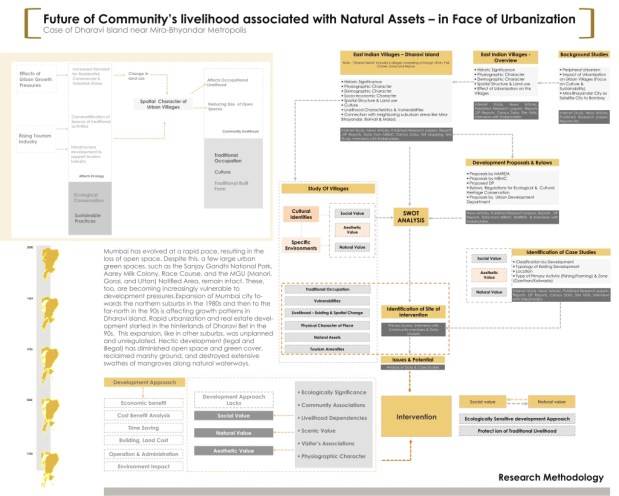KRVIA Blog
HERITAGE AT THE INTERFACE OF NATURE AND CULTURE
An Integrated Approach for Development of Kuttanad Region
Aksa Varghis Kondoor | Urban Conservation | 2022
Heritage at the interface of nature and culture. An integrated approach for development of Kuttanad region
Keywords: GIAHS, integrated approach, livelihood, natural values, cultural values, marginalized communities, perceptions, changing aspirations
This thesis explores the Kuttanad agricultural systems, designated as a Globally important agricultural heritage systems (GIAHS)(1). It is an ecologically sensitive area, having a deep interconnection with local livelihood, food security, biodiversity, traditional knowledge system and cultural-social organization. Such systems lie at the interface of nature-culture and are directly dependent and shaped by local resources and communities. In the history of conservation buildings were considered as heritage. Its values and significance was defined and conserved as an important resource for mankind. Throughout the journey various theories, charters, ideologies in conservation discourse understood, recognized, accepted and established that heritage is much vast and includes all the complexities. Over the time it was categorized under natural-cultural sites and accepted by ICMOS.

Nature culture reflects human diversity, uniquely shaped by evolution and cultural practices (where, culture is defined as anything shared by way of specific process of learning). In natural resources water is one of the most important resources and supports a wide range of biodiversity and sustains the livelihoods and the wellbeing of a myriad people and civilizations. Over the last few decades, haphazard urbanization, unbridled expansion of manufacturing activities, burgeoning growth in the use of chemical inputs in agriculture and pressure of growing populations—both resident as well as floating, has made water ecosystems unsustainable in many parts impacting the entire region. This is the same case clearly evident in the context of Kuttanad. Development here should have an integrated approach without ignoring natural and cultural values that forms the foundation of the region. It is called as the ‘granary of Kerala’ (i.e. Keralathinde Nellara), is the only place in India and one of the rarest sites in the world where below-sea-level polder-farming-system(2) is done. It is intrinsically linked with natural resources like land and water making it a geographically unique zone.


It has a closely woven net of relationships between nature and culture that reflects people’s identity. The land is created by indigenous communities by several reclamation for agriculture, understanding the context formed by the confluence of four major rivers-Meenachil, Manimala, Pampa, Achenkovil flowing towards the north-western direction, debouching into the Vembanad backwater making the region suitable for paddy cultivation. This region is formed below-sea-level, hence nourishing the Vembanad backwaters with salt intrusion making it rich with aquatic life, another source of livelihood for the indigenous people. It has a series of layers through time, each layer able to tell us a human story, imbued with cultural values forming this system which relates directly to the peoples ideologies. The character of the landscape thus reflects the values of the people who have shaped it, and who continue to live in it. Kuttanad is threatened by insensitive development focusing on economic, commercial and political benefits. This degraded the natural assets, leading to an imbalance that further led to natural disasters like floods ruing the entire system. Risking the livelihood, health and wellbeing of marginalized communities and threatening the tangible and intangible heritage.

The study intents to investigate the existing proposal, interventions, and issues around the degradation of the system and provide solutions understanding the values and perceptions associated with the community and the changing aspirations and conflicts emerged amongst them. To recognize and harness the interconnection of natural values and cultural values for the protection and management of the GIAHS(1) in Kuttanad.
Foot note
- GIAHS: The Globally Important Agricultural Heritage Systems (GIAHS) represent not only stunning natural landscapes but also
agricultural practices that create livelihoods in rural areas while combining biodiversity, resilient ecosystems and tradition and innovation. - polder-farming-system: A polder is a low-lying tract of land that forms an artificial hydrological entity, enclosed by embankments known
as dikes.










